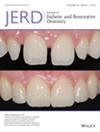Evaluation Methods and Influencing Factors on Accuracy for Static Virtual Articulation Obtained by Intraoral Scanners: A Critical Review of the Literature
Abstract
Objective
Digital technology in dentistry has advanced rapidly in recent years, and as a result, the identification of static virtual articulation as a crucial stage in the digital process has attracted increasing attention. The use of intraoral scanners (IOSs) has made the acquisition of occlusal records more efficient. The purpose of this article is to review information on evaluation methods and influencing factors on the accuracy of static virtual articulation obtained by intraoral scanners.
Overview
An electronic search of the published literature was performed up to November 2023 using five databases: PubMed, Cochrane, Embase, Web of Science, and Scopus. The inclusion criteria were defined as relevant clinical or in vitro English studies on the accuracy of the occlusal relationship obtained using intraoral scanners. Therefore, a total of 30 articles were selected, reviewed, and discussed. Based on the results of the literature review, three methods have been used to evaluate the accuracy of virtual interocclusal records, including distance measurement (10 studies), occlusal contact analysis (13 studies), and deviation analysis after superimposing casts (8 studies). However, direct comparisons between these studies are challenging due to the different methods employed. Factors that were found to potentially impact accuracies, such as the range of vestibular scans, the number and position of virtual interocclusal records (VIRs), the location and extension of edentulous areas, alignment methods, and evaluation software programs have been extensively studied, but the extent to which these factors affect accuracy remains uncertain and varies depending on the specific circumstances.
Conclusions
A combination of multiple evaluation methods for a more rigid assessment of virtual interocclusal records may be a better approach. Attention should be given to the factors that may influence the accuracy of virtual interocclusal records. Future research should focus on optimizing these factors to improve the clinical applicability of virtual interocclusal records.
Clinical Significance
In restorative dentistry, virtual interocclusal records obtained with intraoral scanners have been successfully used with acceptable accuracy, although they present some issues. Understanding the evaluation methods for virtual interocclusal records and the factors that may affect the accuracy of VIRs may lead to better use in clinical practice.

 求助内容:
求助内容: 应助结果提醒方式:
应助结果提醒方式:


